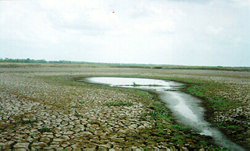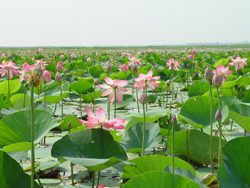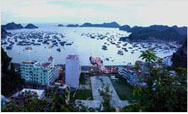You are here » Home » Telling Our Story
Before & After
After years of conservation, flora and fauna return to Hail Haor
Wetlands Conservation Pays Off

| |
Photo: UNOPS
|
|
BEFORE - Hail Haor wetlands in 1999. Over the last 150 years, approximately 50 percent of dry season wetlands have disappeared, resulting in lower fish production. Environmental changes, such as flood embankments and large silt deposits have reduced the area and quality of Bangladesh’s water bodies.
|
| |

| |
Photo: USAID
|
|
AFTER - Hail Haor in 2006. This site has been restored to improve the flow of water and fish from larger rivers. Community management groups now control dry-season fishing. Native fish species have been reintroduced and local fishermen have seen their yields increase by over 150 percent, generating more than $10 million worth of fish in 2005 alone.
|
Despite its small area, Bangladesh’s inland freshwater fish production ranks third in the world. With extensive rivers and floodplains, over half of the country consists of wetlands that provide food and income for millions of rural households. But over the past 30 years, fishermen’s yields have decreased by 40 percent due to disappearing water sources and over fishing. The central government’s focus on maximizing short-term revenue leads to over fishing and hits the poorest populations the hardest, as they are dependent on these resources. USAID has worked with fisherfolk and local leaders to conserve and rehabilitate aquatic habitats. USAID created partnerships between community resource management groups and local governments to oversee long-term conservation and ensure that the revenue and food supply generated benefits the poor. These partnerships created more than 70 fish sanctuaries and established a no-fishing policy during the dry season to allow re-population. The efforts have significantly improved the savings and food baskets of poor people in Bangladesh.
Print-friendly version of this page (505kb - PDF)
Click here for before high-res photo
Click here for after high-res photo
Back to Top ^ | 

